Hiroshima: A City of Peace and Resilience
Hiroshima, located in western Japan, is a city that holds a significant place in world history. Known primarily for being the first city to suffer an atomic bombing during World War II, Hiroshima has since rebuilt itself as a beacon of peace and resilience.
Today, Hiroshima is a vibrant city with a population of over a million people. It is a hub of culture and education, hosting several universities, museums, and cultural institutions. The city’s commitment to peace is evident in places like the Hiroshima Peace Memorial Park and the Atomic Bomb Dome, both of which attract visitors from around the globe.
Hiroshima is also famous for its culinary specialties, particularly Hiroshima-style okonomiyaki, a savory pancake filled with a variety of ingredients, and fresh oysters from the nearby Seto Inland Sea. These dishes are beloved by both locals and visitors alike.
Beyond its history and cuisine, Hiroshima offers beautiful natural landscapes, including the iconic Itsukushima Shrine on Miyajima Island, known for its “floating” torii gate, and the scenic Shukkei-en Garden, providing a peaceful escape from the bustling city life.
Travel Information
How to get around Hiroshima City?
The best way to get around Hiroshima City is by using public transportation, including trams, buses, and trains. The Hiroshima Electric Railway, also known as the Hiroden, is particularly convenient for getting to major tourist spots.
How many days do I need for my Hiroshima trip?
3 days and 2 nights are typically enough to explore Hiroshima’s main attractions, such as the Peace Memorial Park, Miyajima Island, and Hiroshima Castle.
How to travel from Tokyo to Hiroshima?
| Transportation | Travel time | Price | Pros and cons |
|---|---|---|---|
| Shinkansen (Bullet train) | 4 to 5 hours (Depends on the type of Shinkansen) | 18,000 to 23,000 JPY | Fast and convenient. However, it can be expensive. |
| Bus | 12 to 14 hours | From 6,000 JPY | Affordable, but the long travel time can be tiring, especially for overnight journeys. |
| Airplane | Approx. 1 hour 30 minutes | Around 10,000 to 15,000 JPY | Quick flight time, but it requires travel to and from airports and early check-in, which can add to the total travel time. |
Weather in Hiroshima
Hiroshima Prefecture also has a mild Seto Inland Sea climate, characterized by hot summers and relatively moderate winters. Hiroshima City experiences a fair amount of rainfall throughout the year, particularly during the rainy season in June and early July. The city enjoys a comfortable climate, with fewer tropical nights compared to Osaka.
| Month | Highest Temp | Lowest Temp | Average Temp | Precipitation (mm) |
|---|---|---|---|---|
| Jan | 9°C (48°F) | 2°C (36°F) | 5°C (41°F) | 45 |
| Feb | 10°C (50°F) | 3°C (37°F) | 6°C (43°F) | 55 |
| Mar | 13°C (55°F) | 6°C (43°F) | 9°C (48°F) | 95 |
| Apr | 19°C (67°F) | 11°C (52°F) | 15°C (59°F) | 90 |
| May | 23°C (73°F) | 16°C (61°F) | 20°C (68°F) | 100 |
| Jun | 27°C (81°F) | 21°C (70°F) | 24°C (75°F) | 175 |
| Jul | 31°C (88°F) | 25°C (77°F) | 28°C (82°F) | 240 |
| Aug | 32°C (90°F) | 25°C (77°F) | 29°C (84°F) | 160 |
| Sep | 29°C (84°F) | 21°C (70°F) | 25°C (77°F) | 140 |
| Oct | 23°C (73°F) | 14°C (57°F) | 18°C (64°F) | 90 |
| Nov | 17°C (63°F) | 8°C (46°F) | 12°C (54°F) | 65 |
| Dec | 11°C (52°F) | 3°C (37°F) | 7°C (45°F) | 45 |
Hiroshima‘s Local Food
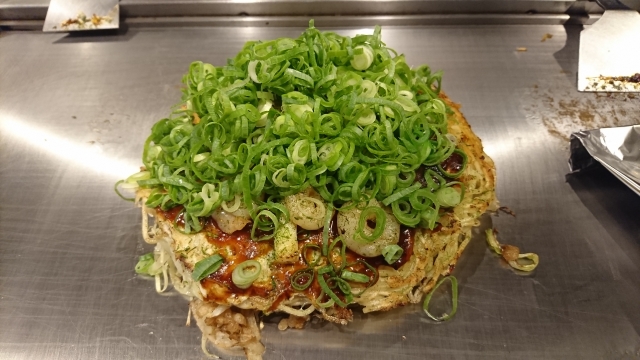
Hiroshima-style okonomiyaki starts with a thin batter, topped with cabbage, pork, and noodles, with optional seasonal oysters.
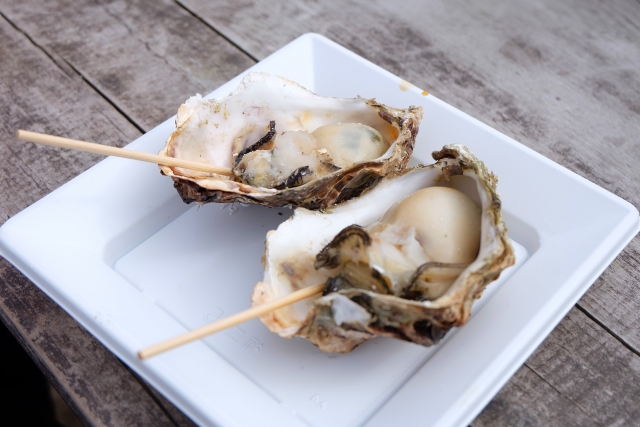
Hiroshima’s oysters are larger and flavorful, especially around Miyajima, where visitors can enjoy them fresh, grilled, or in oyster rice.
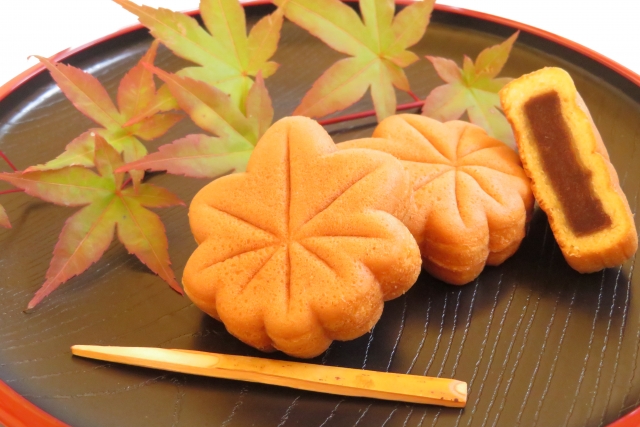
A Hiroshima confection, especially from Miyajima, shaped like a maple leaf and filled with red bean paste, custard, matcha, or chocolate, popular as a souvenir.
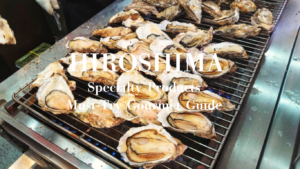
Hiroshima Prefecture: Regional Highlights
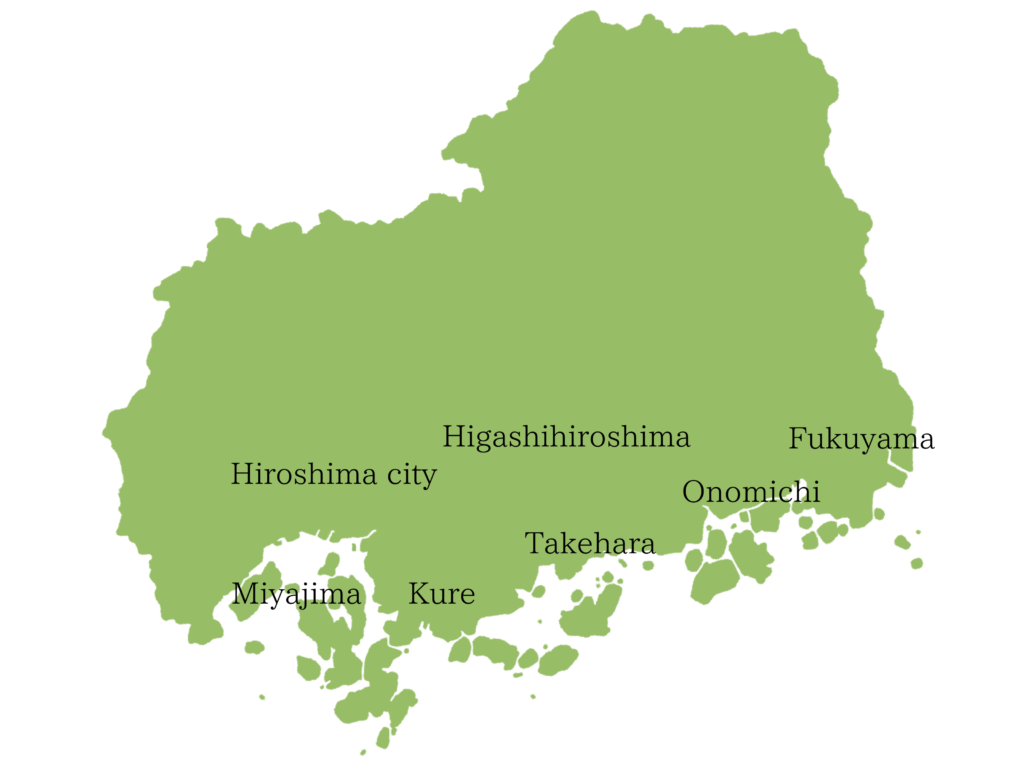
| Region | Features & Attractions |
|---|---|
| Hiroshima City Area | Peace Memorial Park, Atomic Bomb Dome, Hiroshima Peace Memorial Museum, Hiroshima-style okonomiyaki, Hiroshima Carp (baseball team) |
| Miyajima Area | Itsukushima Shrine, Torii Gate, deer, seasonal landscapes, UNESCO World Heritage Site |
| Onomichi Area | Onomichi Ramen, Senkoji Temple, scenic port town, filming locations for movies & dramas |
| Kure Area | Kure Maritime Museum, Kure Naval Base, Battleship Yamato, seafood |
| Higashihiroshima Area | Sake breweries and scenic beauty, historic Saijo Shrine |
| Takehara Area | Takehara Historic District, Edo-era townscape, beautiful coastline |
| Fukuyama Area | Fukuyama Castle, Tomonoura, Seto Inland Sea views, tourism & hot springs |
Activities in Hiroshima
Hirosima City Area
Hiroshima Peace Memorial (Genbaku Dome)
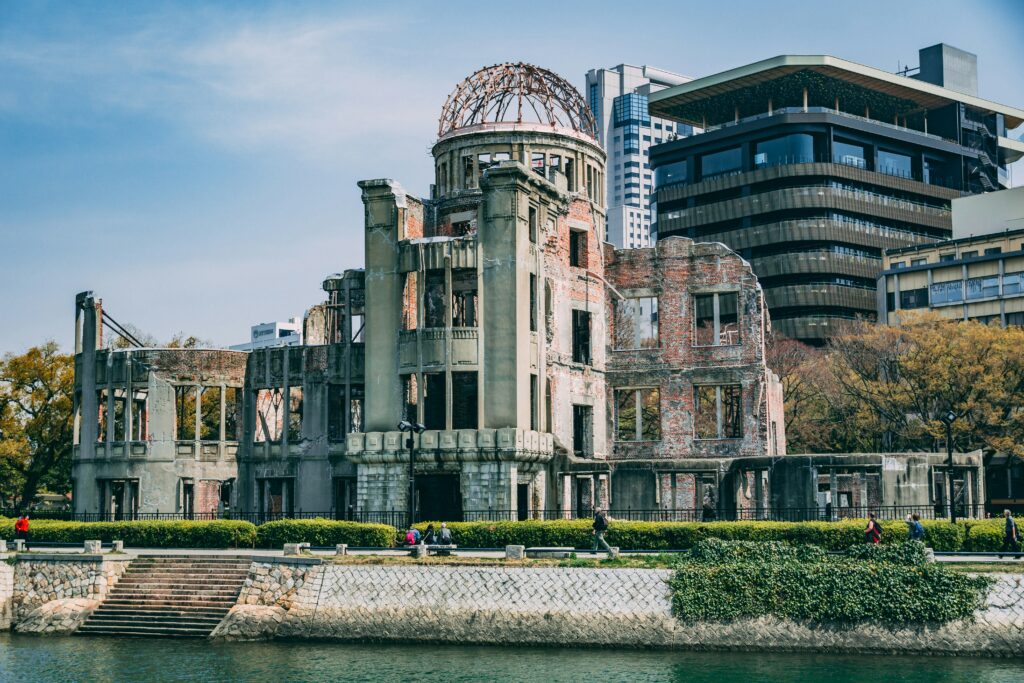
The Atomic Bomb Dome was a building located near the hypocenter of the atomic bomb dropped on Hiroshima on August 6, 1945. At the time, it was used as the Hiroshima Prefectural Industrial Promotion Hall. While most of the building was destroyed by the blast and heat, part of the outer walls and the iron framework of the dome miraculously remained standing. After the war, it was decided to preserve the structure as a symbol of peace, and in 1996, it was designated as a UNESCO World Heritage Site. The Atomic Bomb Dome serves as a poignant reminder of the horrors of nuclear weapons and the importance of peace, attracting many visitors. Viewing the Atomic Bomb Dome itself is free, and it can be seen from the outside without any admission fee.
Hiroshima Peace Memorial Museum
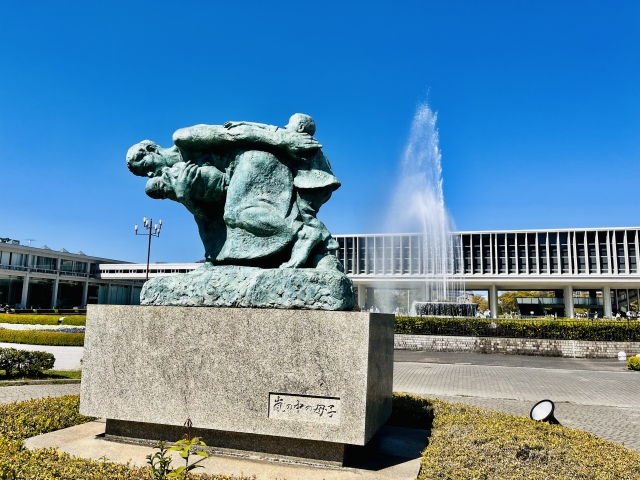
The Hiroshima Peace Memorial Museum was established to convey the history of the atomic bombing of Hiroshima on August 6, 1945, and the subsequent recovery of the city. The museum aims to preserve the records of the tragedy caused by the atomic bomb and advocate for the abolition of nuclear weapons and the importance of peace.
Inside the museum, visitors can find photographs, artifacts, survivor testimonies, and scientific explanations illustrating the devastating effects of the atomic bomb. These exhibits provide a deep understanding of the horror of nuclear warfare and its aftermath. The museum also serves as an educational site to teach future generations about the value of peace.
Located near the Atomic Bomb Dome, the museum attracts numerous visitors from both Japan and around the world each year, including many students and tourists.
Orizuru Tower
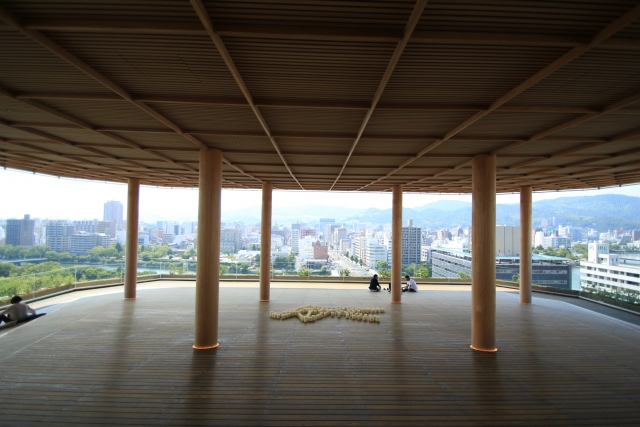
Orizuru Tower is an observation facility located in the heart of Hiroshima, next to the Atomic Bomb Dome, and opened in 2016. From the top-floor observation deck, visitors can enjoy a 360-degree view of Hiroshima, with particularly stunning sights during sunset and nighttime.
Inside the tower, the “Orizuru Square” allows visitors to fold paper cranes and place them on a glass wall as a symbol of peace. The tower also features shops and cafes offering Hiroshima’s local specialties, providing a taste of the city’s culture.
Hiroshima Castle
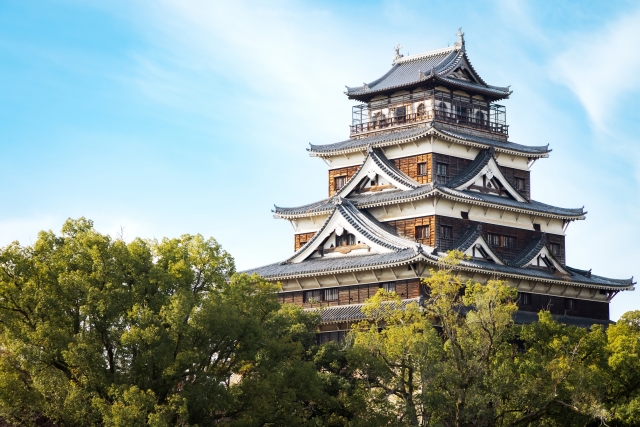
Hiroshima Castle, also known as “Rijo” (Carp Castle), was built in 1589 by Mōri Terumoto. It served as the political center of the Chugoku region. Destroyed by the atomic bomb in 1945, it was rebuilt in 1958. Now a museum, it showcases Hiroshima’s history and culture. The surrounding park is popular for cherry blossoms in spring, symbolizing the city’s resilience.
Shukkeien
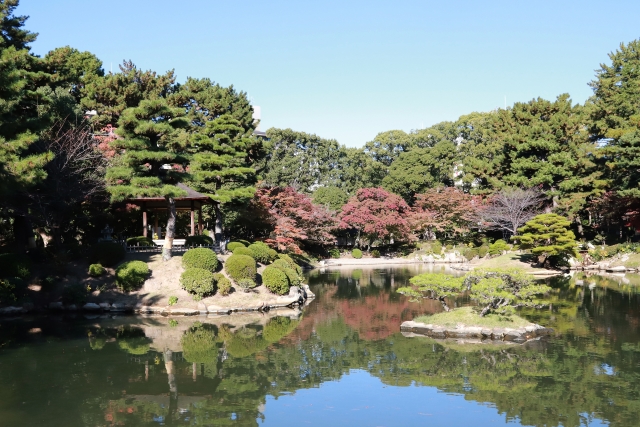
Shukkeien is a historic Japanese garden located in Hiroshima City. It was originally built in 1620 by Asano Nagaakira, the lord of the Hiroshima Domain, as part of his villa. The name “Shukkeien” means “shrunken-scenery garden,” reflecting its design, which condenses various scenic views into a small space.
Centered around a pond, the garden features bridges, small islands, and a teahouse, offering visitors picturesque views throughout the year. Shukkeien is a beloved spot where both locals and tourists can enjoy Hiroshima’s cultural and historical beauty.
Miyajima Area
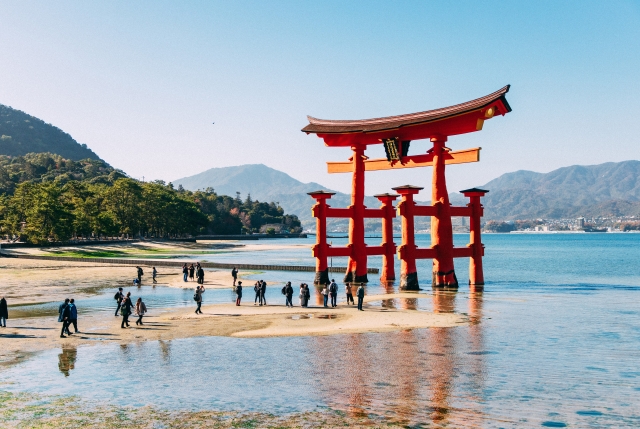
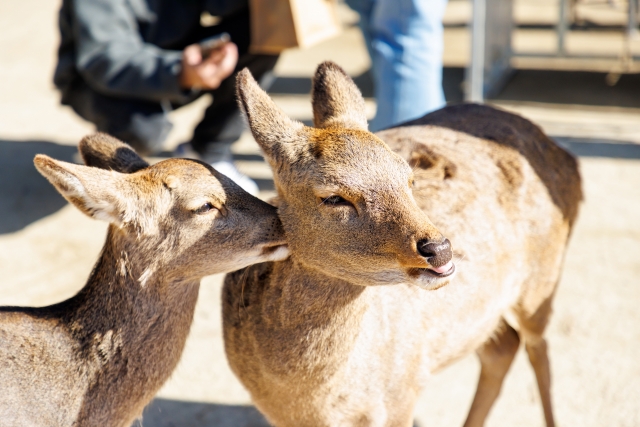
Miyajima, officially known as Itsukushima, is an island located in Hatsukaichi City, Hiroshima Prefecture. It is renowned for its beautiful scenery, counted among Japan’s three most scenic spots, with the iconic Itsukushima Shrine and its vermilion torii gate standing in the sea.
Miyajima has long been considered a sacred island and has been a site of worship for centuries. The entire island is part of the sacred grounds of Itsukushima Shrine, blending rich natural beauty with cultural heritage. Additionally, many deer roam freely on the island, adding to its charm and making them a beloved feature among visitors.
Miyajima offers breathtaking views throughout the seasons, attracting many tourists, especially during the autumn foliage at Momijidani Park and the cherry blossom season in spring. The island is easily accessible by ferry from Hiroshima City, making it a must-visit destination when exploring the area.
Itsukushima Shrine
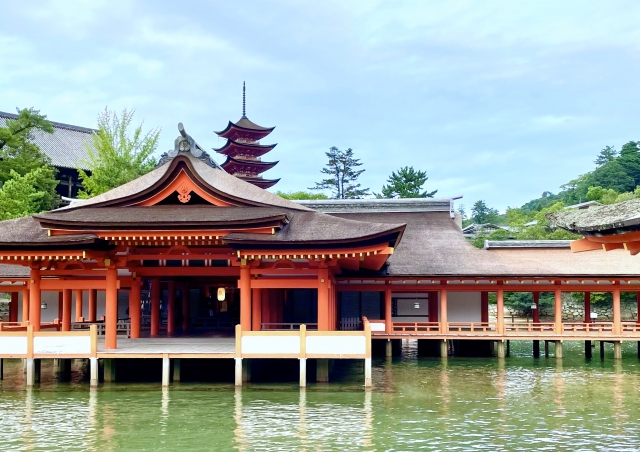
Itsukushima Shrine, located on Miyajima Island in Hiroshima Prefecture, is renowned as one of Japan’s three most scenic spots. Established in 593 and later developed into its current form during the Heian period, the shrine is famous for its vermilion-lacquered torii gate and buildings that appear to float on the sea.
During low tide, visitors can walk up to the torii gate, while at high tide, the shrine offers a stunning view as if it were floating on the water. Registered as a UNESCO World Heritage Site, Itsukushima Shrine is one of Japan’s most iconic and frequently visited shrines.
Mount Misen
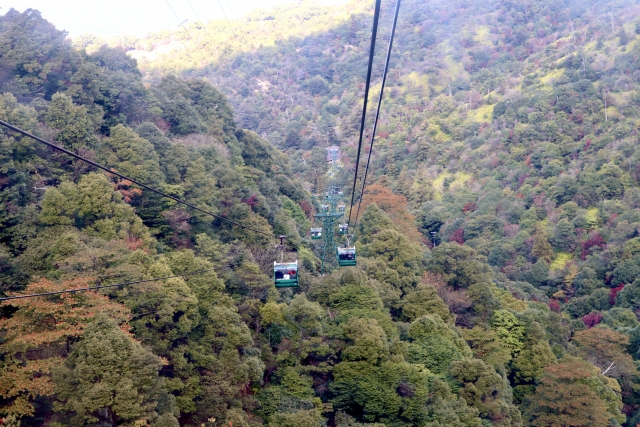
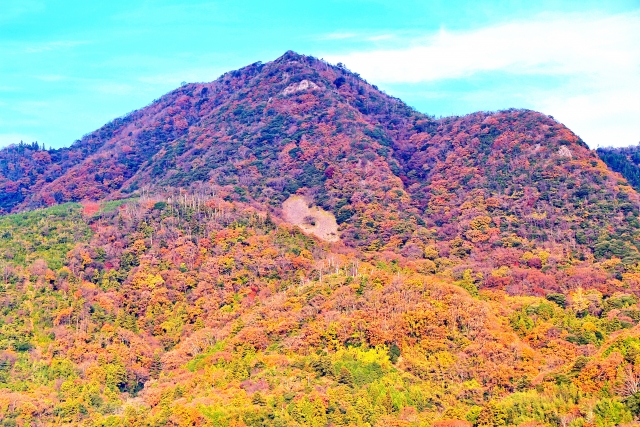
Mount Misen, standing at 535 meters, is a sacred mountain on Miyajima Island in Hiroshima Prefecture. It has been revered since ancient times and is home to Misen-ji Temple near the summit, attracting many spiritual practitioners.
As part of the UNESCO World Heritage site of Itsukushima Shrine, Mount Misen offers breathtaking panoramic views of the Seto Inland Sea and surrounding islands from its peak. The mountain is also covered by the Misen Primeval Forest, a nationally designated natural monument, preserving its rich biodiversity.
Visitors can reach the summit via a combination of ropeway and hiking trails, making it a popular spot for enjoying the scenic beauty throughout the year.
Onomichi Are
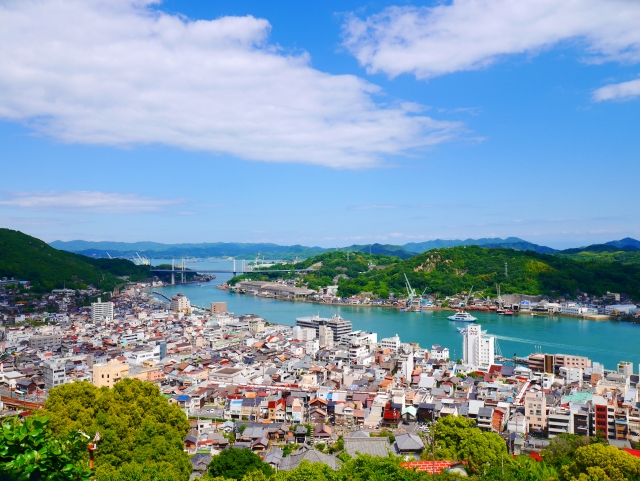
Onomichi is a port town located in the eastern part of Hiroshima Prefecture, known for its beautiful scenery surrounded by the sea and mountains. Historically a center of commerce and culture, the town retains its charming old streets. Onomichi is also known as the “Town of Slopes” due to its numerous hills and stone steps. Additionally, it’s famous for its many cats, with spots like “Cat Alley” being particularly popular among cat lovers, making it a favorite destination for tourists.
Senkoji Ropeway
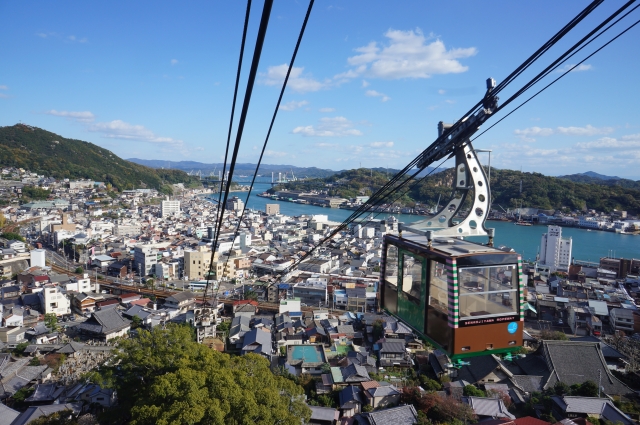
The Senkoji Ropeway is a cable car in Onomichi that connects the city center to Senkoji Park on Mount Senkoji. The approximately three-minute ride offers panoramic views of the beautiful Onomichi cityscape and the islands of the Seto Inland Sea. Senkoji Park at the top is known for its cherry blossoms and attracts many visitors. The ropeway provides a convenient way to enjoy Onomichi’s scenic beauty.
Senkoji Temple
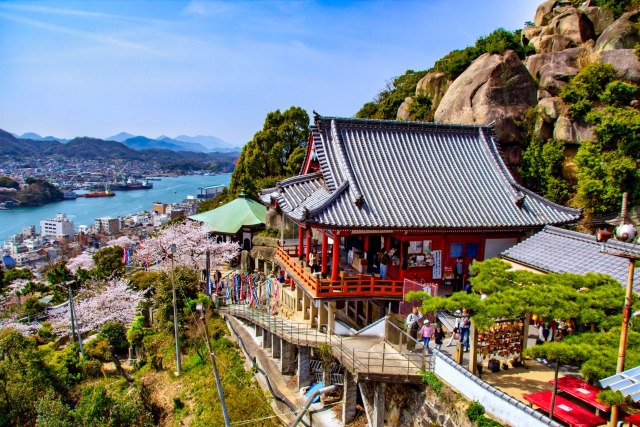
Senkoji Temple is a Shingon Buddhist temple located on Mount Senkoji in Onomichi, Hiroshima Prefecture. It is believed to have been founded in 806 by Kobo Daishi (Kukai). The temple offers a panoramic view of Onomichi and the Seto Inland Sea, with particularly famous nightscapes. Senkoji Park, known for its cherry blossoms, attracts many visitors during spring. The temple grounds feature attractions such as the “Bell of Happiness” for good fortune and the “Path of Literature,” making it a beloved tourist destination.
Opening Hours : 9:30-17:00
ONOMICHI U2
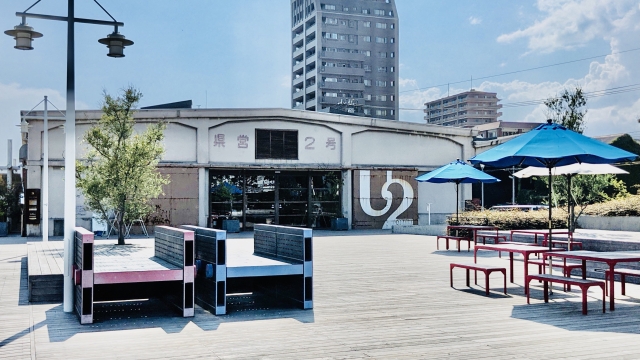
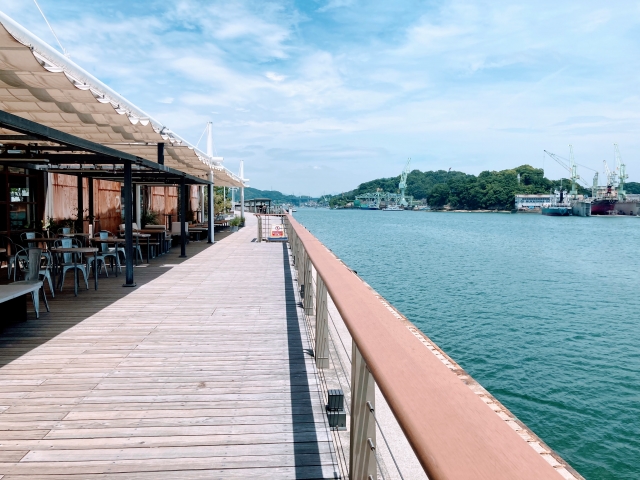
A large complex housed in a renovated maritime warehouse, featuring restaurants, bars, cafes, and lifestyle shops.
It includes “HOTEL CYCLE,” the first in the country to allow check-in with your bicycle, and a shop from the world-renowned bicycle brand “GIANT,” making it an ideal base for cycling the Setouchi Shimanami Kaido. Exclusive rental bicycles are also available for hotel guests.
Kosanji Museum
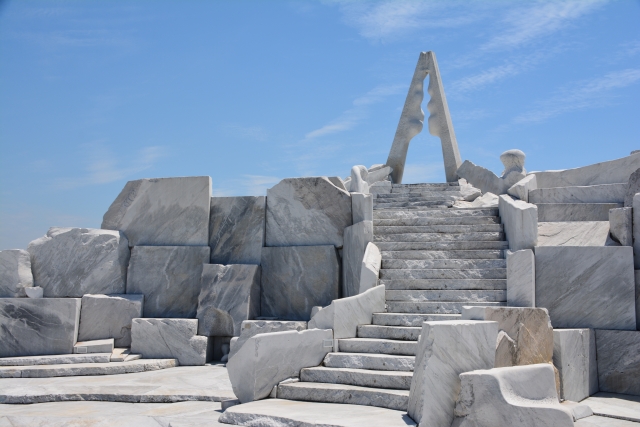
Kosanji Museum is a temple and museum located on Ikuchi Island in Onomichi, Hiroshima Prefecture. Built in 1940 by Kozo Kosanji in memory of his mother, it is known for its beautiful architecture and art. Often called the “Nikko of the West,” it also features exhibits of Buddhist art and cultural treasures.
Cat Alley
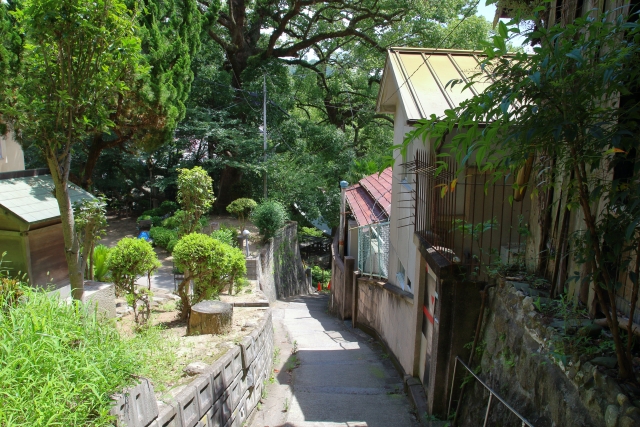
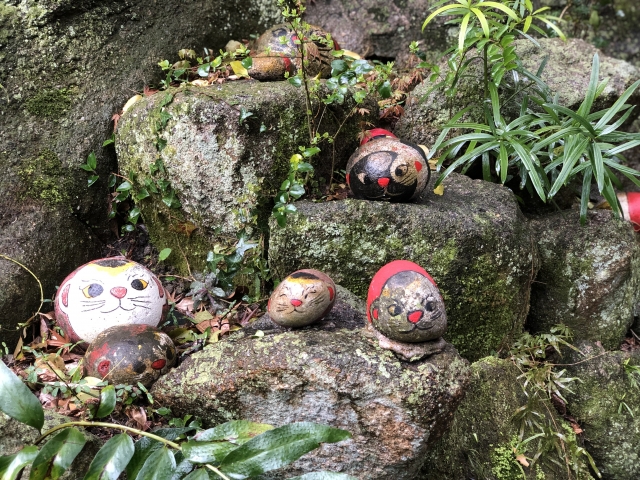
Cat Alley (Neko no Hosomichi) is a narrow alley in Onomichi, known for being a gathering spot for many cats. The alley features ceramic cat figurines, making it a fun place for visitors to explore while enjoying the presence of the cats. It’s particularly popular among cat lovers and is well-known as a charming spot where people can stroll and interact with the cats of Onomichi.
Cycling Road on the Setouchi Shimanami Kaido
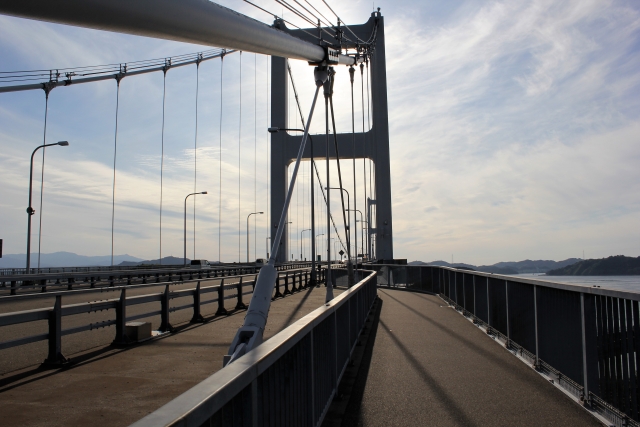
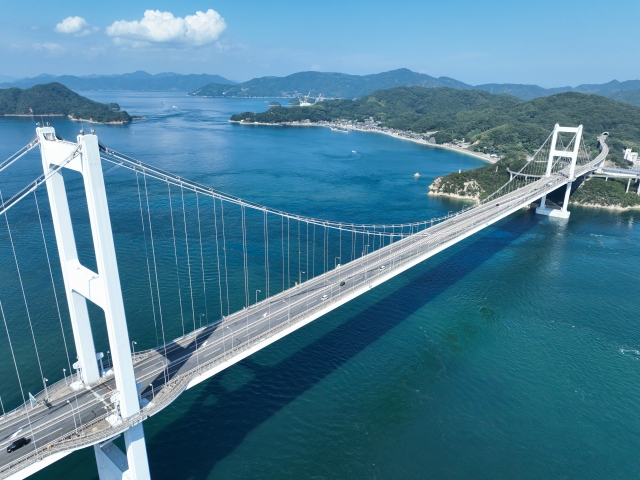
The Cycling Road on the Setouchi Shimanami Kaido is Japan’s first bike path that allows cyclists to cross a strait.
Stretching approximately 70 kilometers, this scenic sea route can be fully enjoyed by bicycle. Local governments along the Shimanami Kaido operate a bike rental system, with terminals in each area allowing for one-way rentals. A wide variety of bikes are available, including children’s bikes, tandem bikes, and electric-assist bicycles.
Setoda Sunset Beach
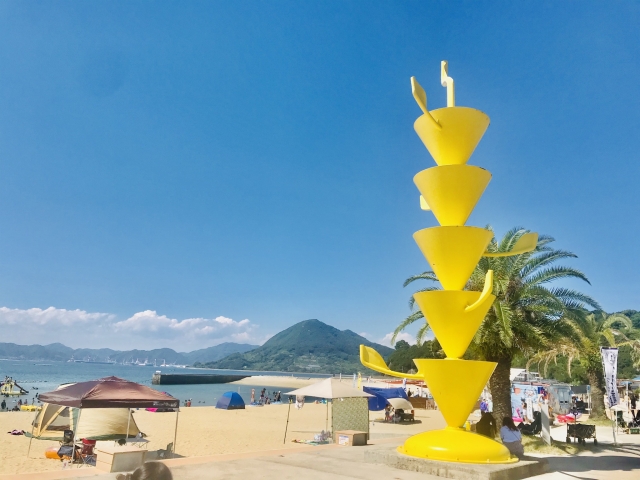
Setoda Sunset Beach is a beautiful beach located in Setoda Town, Onomichi City, Hiroshima Prefecture. It features about 800 meters of white sandy shoreline and calm waters, renowned for its stunning sunset views, as the name suggests. The beach is open for swimming during the summer season, with facilities like showers and rest areas available. It also offers a campground and rental bicycles, making it a great spot for cycling and outdoor activities.
Kure Area
Yamato Museum
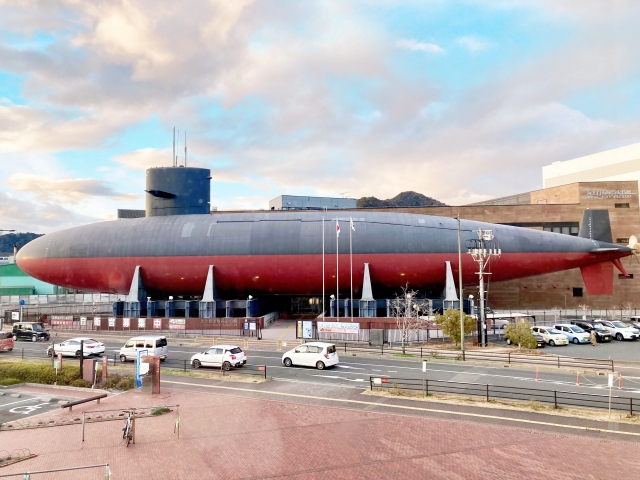
The Yamato Museum, officially known as the Kure Maritime Museum, is located in Kure City and focuses on the history of the Japanese Navy and shipbuilding, with the battleship Yamato as its centerpiece. The Yamato was one of the largest battleships ever built during World War II, and the museum features a 1/10 scale model of it as a highlight.
Inside the museum, visitors can explore a wide range of exhibits, including valuable historical materials, real weapons and equipment, and displays illustrating the evolution of shipbuilding and wartime life in Kure. The museum also provides in-depth information about Kure’s significant role as a major naval base in Japan.
The Yamato Museum serves as an educational facility, attracting many visitors from Japan and abroad to learn about history and the importance of peace.
Higashi Hirosima Area
Saijo Sake Brewery Street
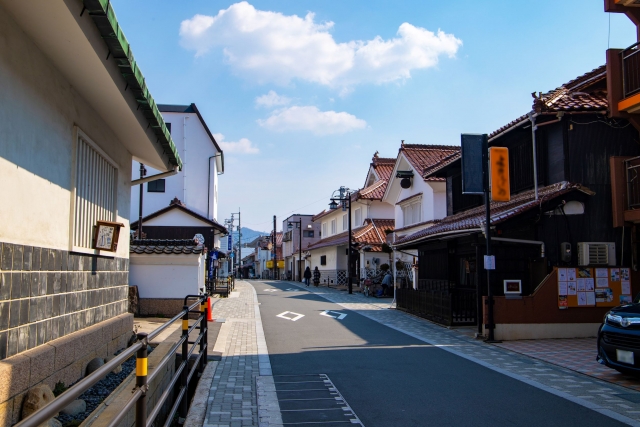
Saijo Sake Brewery Street, located in Higashihiroshima City, Hiroshima Prefecture, is one of Japan’s renowned sake brewing areas. The street is lined with multiple breweries, characterized by their white walls and chimneys. Visitors can enjoy brewery tours and sake tastings. Each October, the area hosts the “Sake Festival,” attracting many tourists to this popular destination.
Takehara Area
Okunoshima
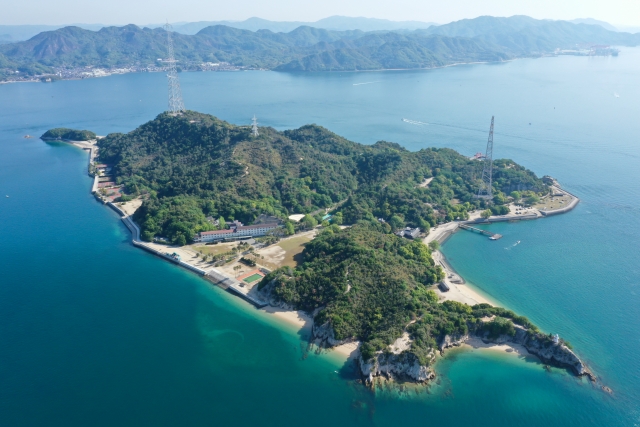
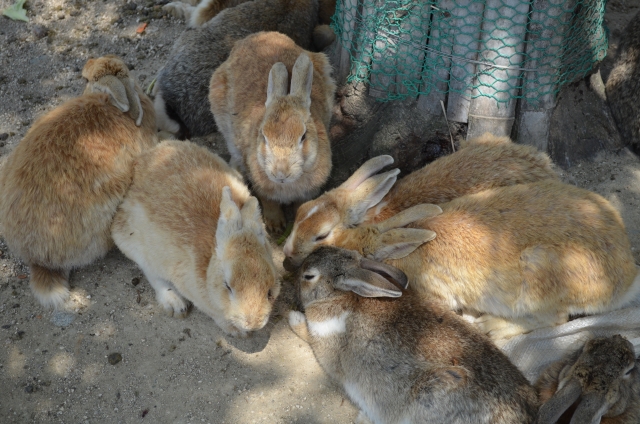
Okunoshima part of Takehara City in Hiroshima Prefecture, is known as Rabbit Island due to its large population of wild rabbits. During WWII, it was a secret site for poison gas production, remnants of which can still be explored. Today, it’s a popular tourist spot with camping facilities and scenic views. Access is via a short ferry ride from Tadanoumi Port.
Takehara Townscape Preservation District
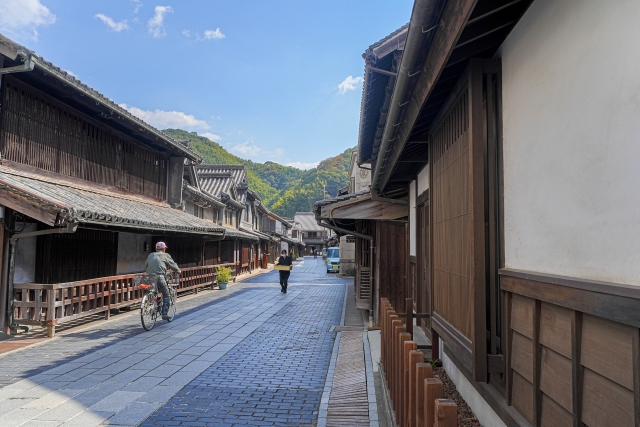
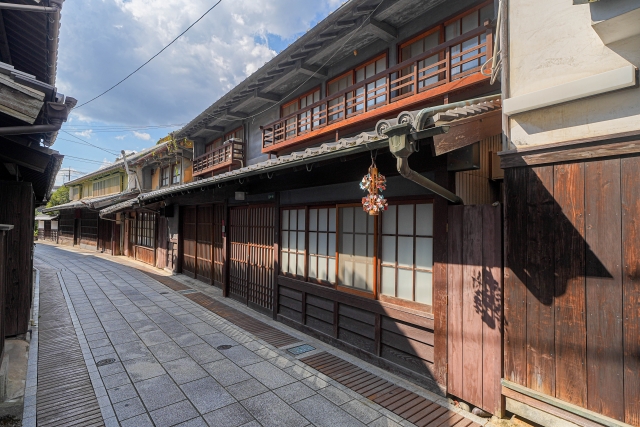
The Takehara Townscape Preservation District is an area in Takehara City, Hiroshima Prefecture, where historic streets have been preserved. It features townhouses and merchant houses from the Edo to Meiji periods, allowing visitors to experience the atmosphere of that era. Many buildings reflect the prosperity of the salt industry, making it a culturally significant and popular tourist destination.
Fukuyama Area
Tomonoura
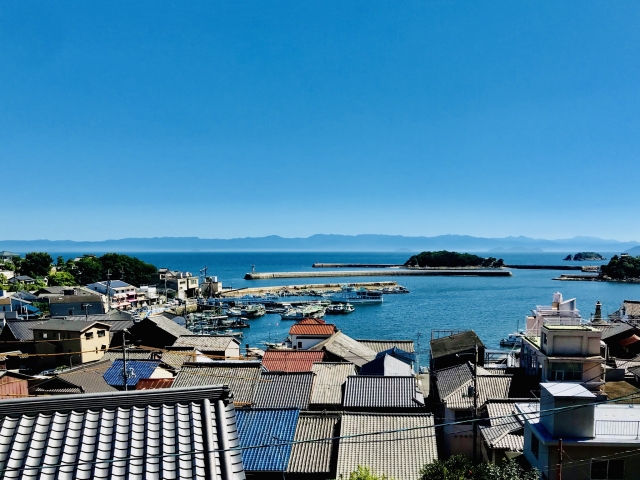
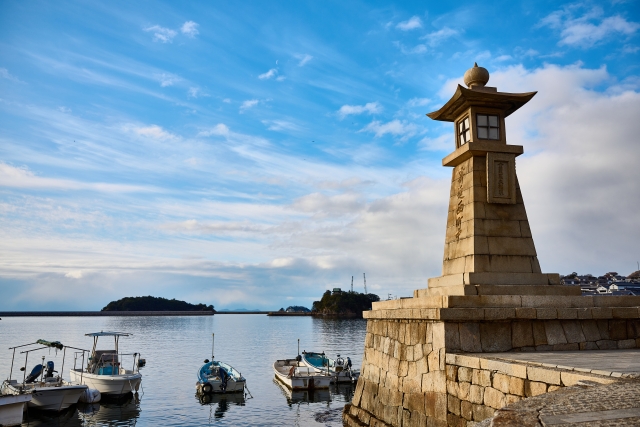
Tomonoura is a port town located in the southern part of Fukuyama City, Hiroshima Prefecture, known for its well-preserved Edo-period scenery. Famous for its traditional fishing harbor, the town has been the setting for many films. Tomonoura is also renowned for producing “homeishu,” a traditional medicinal liquor, making it a popular destination that blends history and culture.
Fukuyama Castle
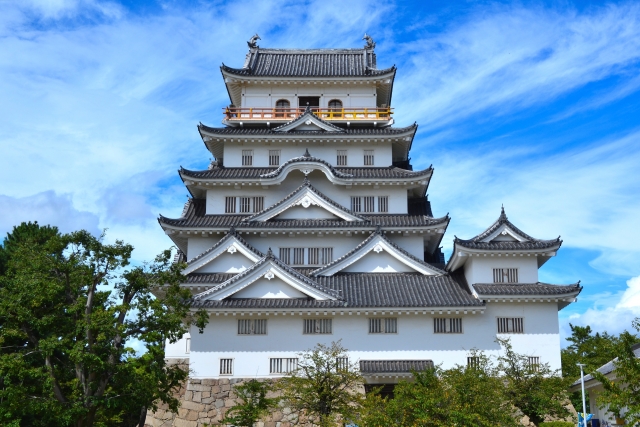
Fukuyama Castle, located in Fukuyama City, Hiroshima Prefecture, was built in 1622 by Katsunari Mizuno. The castle stands in the city center, offering panoramic views of the area from its main keep. It is now maintained as a park and includes a museum where visitors can learn about the region’s history and culture.
Sensui Island
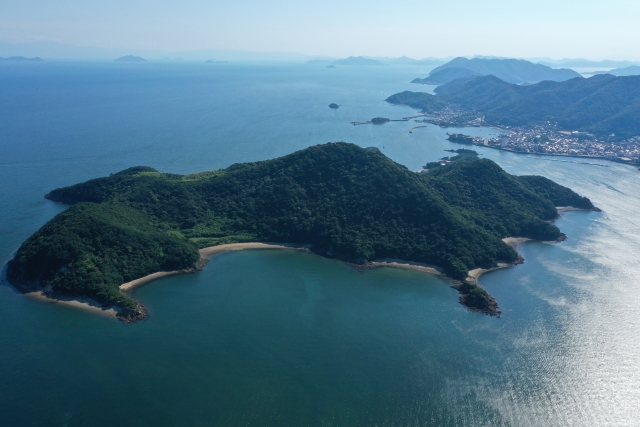
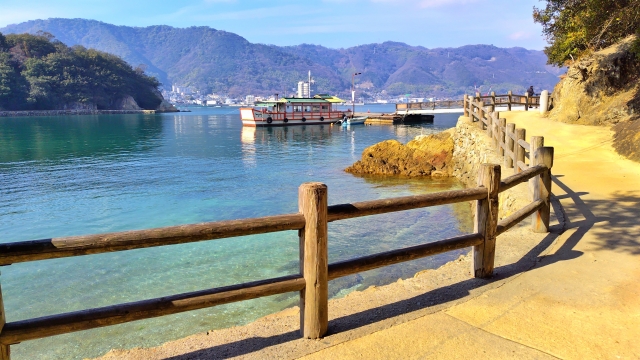
Sensui Island is an uninhabited island located near Tomonoura in Fukuyama City, Hiroshima Prefecture, known for its stunning natural beauty and historical significance. The name means “an island so beautiful that even immortals would be intoxicated,” making it a popular destination for sightseeing and relaxation. Visitors can enjoy nature walks, hot springs, and swimming.

Comments